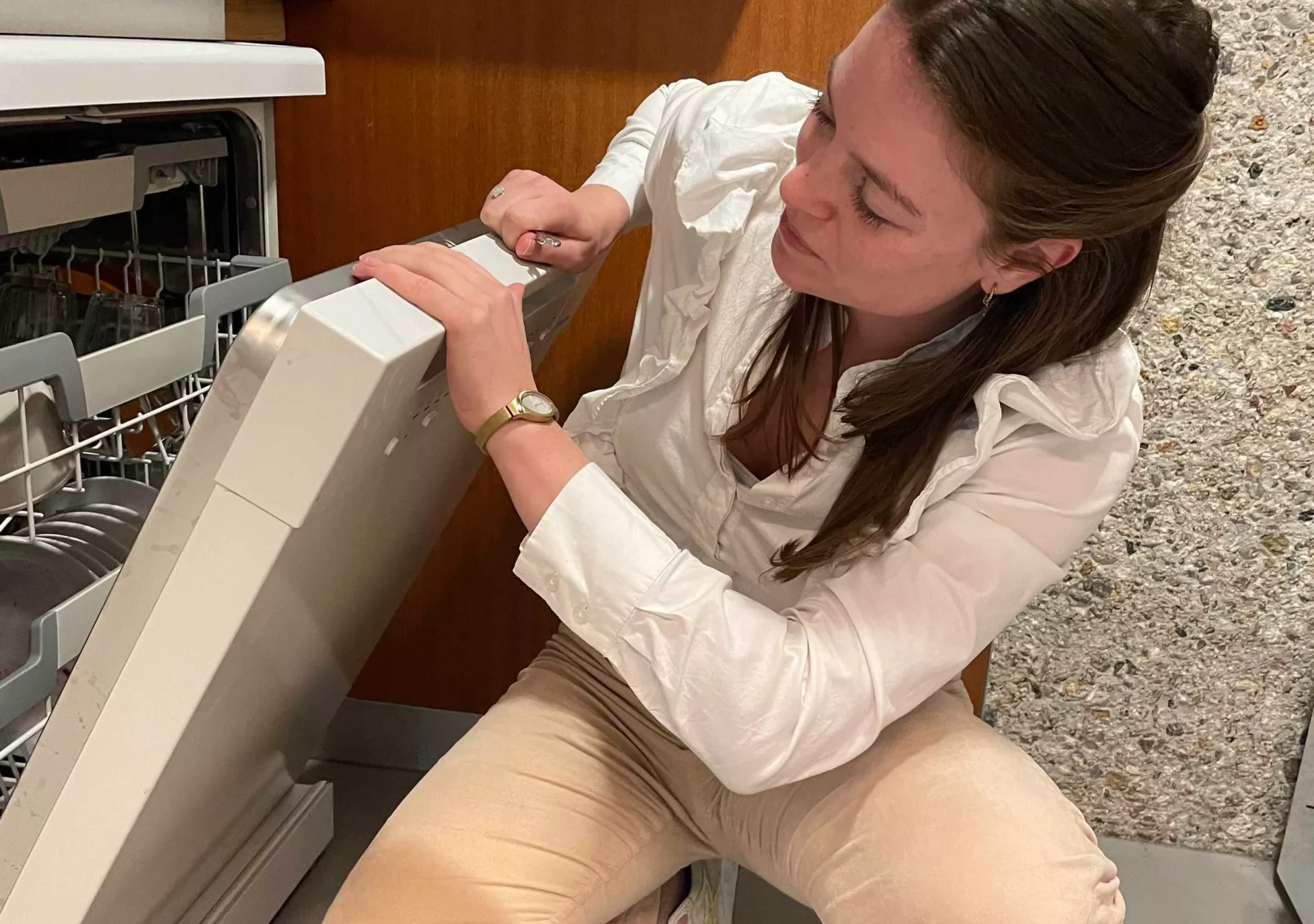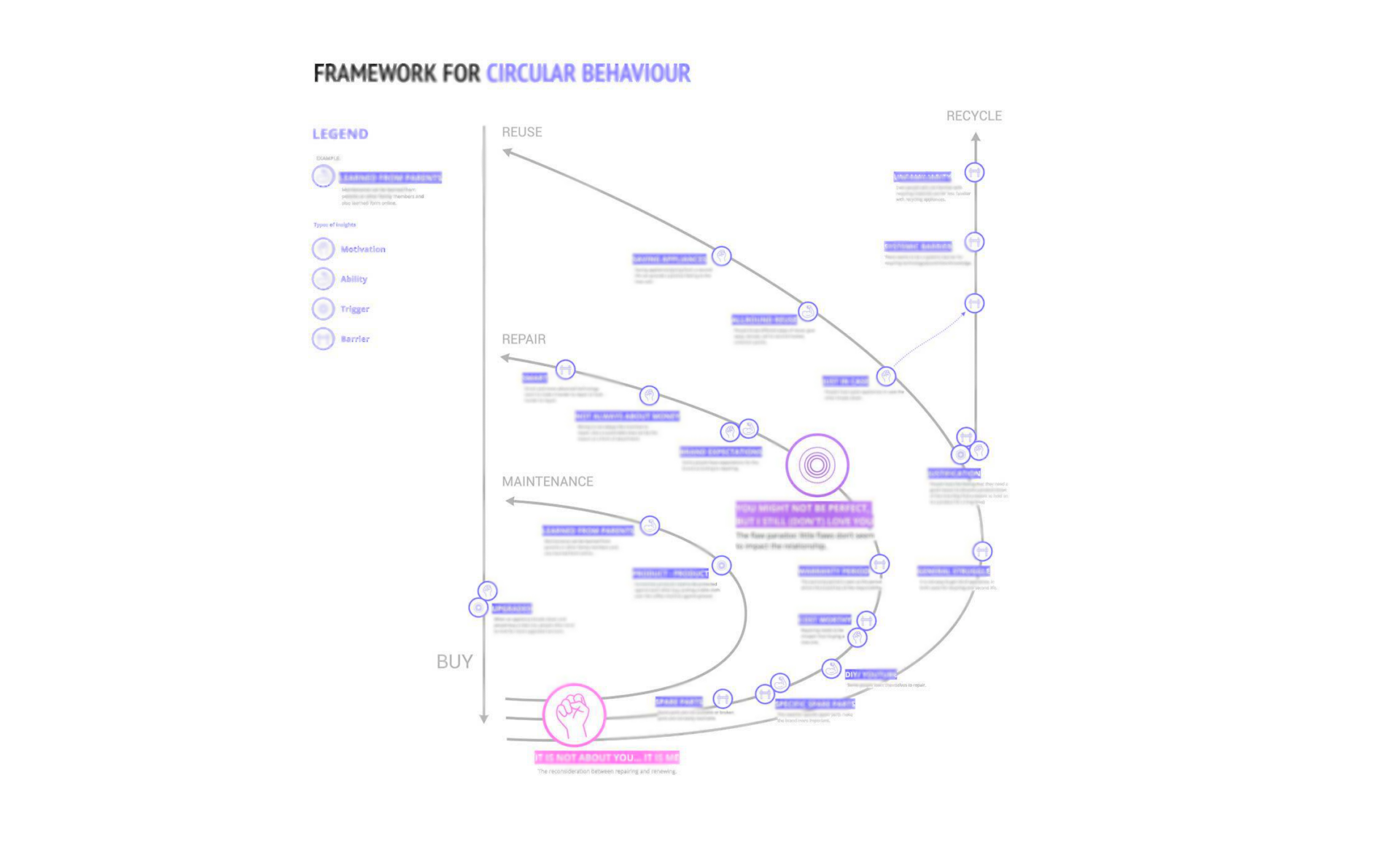Extending product life and stimulating circular behaviour
Consumer goods businesses of all stripes are setting ambitious circular targets. Driven by legislation like “right to repair” or digital technology enabling preventive care, these manufacturers are exploring added value services supporting product use and building stronger customer relationships.
The challenge is making the shift in business models and consumer behaviours. Exploring how circular would work operationally is not enough: users play a key role in prolonging product life and closing product/material loops.

|
Challenge
Facilitating users to play a role in reaching circular goals
|
The concept of circularity is keeping products in circulation as long as possible and steer away from them becoming waste. A lot of attention goes into the operational aspects of this: How do we organise reverse logistics? How do we design for remanufacturing? These are critical factors, but without the customers maintaining, repairing, upgrading, reusing and returning, that effort is wasted. Ultimately they decide whether to keep it or replace it. Similarly, they control what happens to the appliance at the end of life, holding the key to secondary markets and remanufacturing.
We did a deep dive into this dilemma to understand how people relate to their appliances (both functional and emotional) and find opportunities to stimulate sustainable behaviours.
|
Approach
Gaining a deep and contextual understanding of human-product relationships and finding opportunities for sustainable change
|
We have observed and spoken at length with households in North America and Europe. We have visited their homes, asking them to show us their appliances and observed them as they used them.
Through the interviews and observations, we gained a deep understanding of:
- How people relate to appliances
- How they take care of it
- The relationships they develop with them
- The influence of the cultural context
- How these relationships change over time
What was fascinating was how much people relate to appliances in emotional terms. People have attachments to devices that were part of their lives at important moments. We appreciate the workhorses that alleviate us from menial tasks and mourn the loss of things that fail. Sometimes we cannot let them go even when they do not work anymore.
From this insight, we saw how extending product life has the potential to tap into a lot more meaning for people and to build stronger relationships with products and brands.
|
Outcome
Lifecycles combine to extend life
|
To make sense of what we learnt and to translate the insight into actionable opportunities, we developed a relationship lifecycle. This model describes the human-product relationship from the moment people meet the appliance and invite it into their homes all the way to reconsidering and saying goodbye. The framework captures insights into what contributes to a strong and caring relationship. We found five key moments where the relationship could be developed:
-
At the point of decision to buy – people expect and resent that appliances have a limited life. A different promise of something more durable and reliable would be valued but needs a shift in value proposition.
-
When the new ‘housemate’ enters the home – this is the beginning of the relationship, and getting off to a good start is important. Establishing how we work together will set us up for success.
-
Day to day – in relationships, we check in and establish that all is well. Our appliances can subtly do the same and even suggest things to do together.
-
When something goes wrong – The critical make or break of a relationship. Designing for the first failure and how ensuring it is well supported and a ‘moment for growth’ is essential.
-
Before the end – a bit like a will or a retirement plan, knowing in advance what to do with something when it comes to the end of life gives it a better chance of leading to remanufacture or secondary markets.
We also analysed our data against the circular loop model, capturing insights into what drives or hinders people to maintain, repair, upgrade, reuse or recycle their appliances.
This model gives us the means to understand how both products and services must be designed for users to opt for an extended-life product relationship at purchase and maintain a relationship with the product and the brand through a longer lifespan.

|
Conclusion
Longer-lasting and better value-for-money appliances
|
The potential is there for customers to be more satisfied with longer-lasting and better value-for-money appliances. So let’s explicitly tap into that potential and forge stronger brand relationships. Good for the customer, a new opportunity for the business and with care for all of us by reducing our ecological impact.

As Lead Sustainability for Livework, Anna coordinates across clients and projects to ensure our designers structurally update their mental models, approach and toolset to integrate the ecological perspective.
As a pragmatic environmentalist, she draws from over 6 years of experience in complex service/system innovation projects and transformation programs at companies like JPMorgan and Adidas. She leverages this background to work as a catalyst 0f change for the better.
Related content
